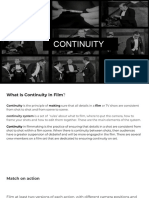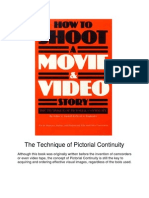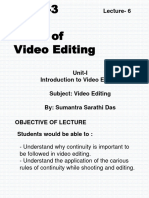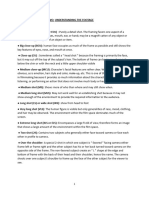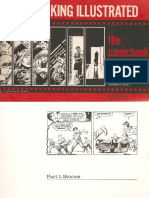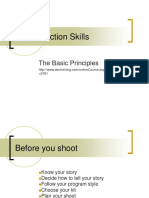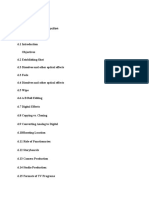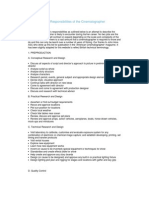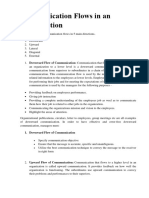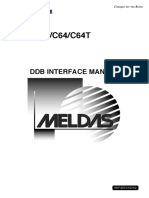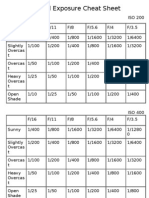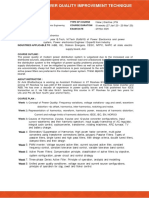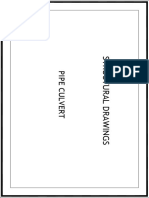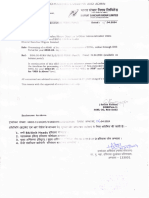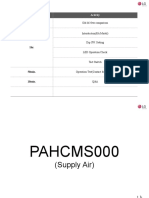Maintaining Continuity
Maintaining continuity One of the primary jobs of a producer is to analyse each action breaking it up
into a series of pictures or shots, record these shots in whatever order he likes and then re-assemble
these shots in the right order so as to presents a continuous show. In other words, the producer must
ensure continuity of action, dialogue, costumes, props and background from shot to shot and from
scene to scene. In case of discontinuous shooting, it is important to match such aspects of continuity as:
Technical continuity for matching colour, brightness, contrast, light intensity, etc.
Video and audio continuity for action, shot location, background, atmospheric effects, sound
quality and volume and other effects.
Continuity of tinze, direction and movement.
To give you an example, if the background in two or more successive shots of the same location
gets changed, the viewer will be confused. Similarly when we show a shot of a man running from 'right
to left' and join it with a pair of his legs running from 'left to right, the viewer will lose the sense of
direction and will fail to relate the two shots. One therefore, has to look for and ensure continuity in the
content of each shot and maintain this continuity while switching from one shot to the next. So long as
the action of the story is continuous, we can continue to cut from one shot to the next. This will ensure
continuity of action.
How to Maintain Continuity in Film
Shooting for film and TV show can be chaotic. The sheer amount of details—from camera settings
to props—that go into filming each individual scene can be difficult to keep track of, and this can
cause problems with an important aspect of storytelling called continuity. Continuity errors are one
of the most common movie mistakes, and they can occur in everything from small -budget indie TV
shows to high-production Hollywood films.
What Is Continuity?
Continuity is the principle of making sure that all details in a film or TV show are consistent from
shot to shot and from scene to scene. If a scene upholds the standards of continuity, each shot feels
as though it seamlessly flows from the previous shot, reinforcing a sense of realism in the story. In
reality, however, each shot may have been taken at a different time and in a completely different
order. For instance, if at the beginning of a scene an actor picks up a glass with their right hand,
continuity dictates that they should be holding that glass with their right hand throughout the scene.
�Continuity problems occur most often in scenes with both establishing shots (often called ―master
shots‖ or ―long shots‖) and medium shots or close-ups. Establishing shots are a wide view of the
scene and can include a lot of props and furniture, while medium shots and close-ups focus just on
the actor without a lot of background. During filming, set crews will often move all of the props and
furniture into and out of the scene for various types of shots. This back-and-forth is an easy way for
visual continuity errors to sneak in.
How to Identify Continuity Mistakes
There are several categories of continuity in feature films and TV that filmmakers must be aware of
during film production and post-production:
Prop and costume continuity. Prop and costume inconsistencies are the most common
continuity errors in film and TV. Examples of errors between takes include different color
mugs being used throughout a scene, or different numbers of buttons being buttoned on an
actor’s coat.
Acting continuity. Filmmakers often shoot several takes of the same shot to give editors as
many options as possible during post-production—and with so many takes, actors may do
things slightly differently each time, introducing small continuity mistakes. Examples of
errors in acting continuity include actors using a different hand when picking up a prop, or
looking in a slightly different direction in each take when delivering lines to an off-camera
character, creating a fluctuating point-of-view.
Time continuity. When filming schedules require that shots in the same scene be filmed
hours, days, or even months apart, there can be spatial continuity variations between shots that
can be difficult to plan for. Examples of errors in time continuity include significant changes
in weather or season, or different lengths of shadows between shots.
Plot continuity. Perhaps the most significant consistency errors are errors in plot continuity.
Often called ―plot holes,‖ these errors aren’t about visual continuity—rather, they’re
conceptual inconsistencies that can occur when a script hasn’t been written carefully, when a
script has undergone significant revisions, or when actors improvise during scenes. For
example, if a character says they’re an only child and then later tells a story about a sibling,
that would be a plot continuity problem.
Camera and audio continuity. Throughout a film or TV episode, picture settings and audio
levels should be consistent, which means that filmmakers need to take special care to ensure
they’re using the same equipment and correct settings for each shot in a scene. If not, there
could be distracting variations in things like light levels, image sharpness, or volume.
�Why Is Maintaining Continuity Important?
Continuity is vital to good storytelling because it helps keep viewers immersed in the film or TV
show. Filmmakers want audiences to be able to pay attention to the action and dialogue during their
story as if it’s happening in the real world, and when every detail of a set is consistent throughout a
scene, the audience can pay full attention.
However, if little details are inconsistent, or if there are plot holes in the story, viewers will become
distracted and won’t be able to focus on the storytelling; they’ll spend more time thinking about the
fluctuating water levels in a character’s glass and less time listening to the dialogue or caring about
the story. That’s why maintaining continuity is crucial—it keeps audiences engaged.
4 Tips for Maintaining Continuity During Production
With so many days of filming and so many details in every shot, it can become extremely difficult to
maintain continuity on a set. Here are a few tips:
1. Take photos. The best way to be sure of even the smallest details of a shoot stay consistent is
to take photos. Photos help you track details you wouldn’t think to take note of otherwise, and
they make it significantly easier to set up props the same way between takes. These shots
don’t need to be taken on a DSLR camera—filmmakers have used simple digital cameras or
even polaroids to keep track of continuity.
2. Maintain detailed continuity reports. Continuity reports are detailed records of each day’s
shoot, including camera settings, screen direction, weather, props, and any possible deviations
from the script. Continuity reports are a great way to ensure that everything—even the sound
quality—is consistent from shot to shot.
3. Keep your shooting days close together. The more time that elapses between shoots, the
more room there is for filmmakers to forget the details of each scene—or worse, the higher
the possibility that shooting locations will undergo significant changes, like transitioning from
summer to fall. Where possible, a short period of time between shots can help ensure that
crew members remember each scene’s details and can minimize the possibility of weather
changes or other location variations.
4. Hire a script supervisor. Continuity is a huge responsibility on set, and with so much other
work that needs to be done, maintaining continuity can quickly get overwhelming for crew
members with other jobs. That’s why most film and TV crews include a script supervisor,
whose sole responsibility is ensuring continuity between shots and scenes.
� COSTUME DESIGN DEFINING CHARACTER
PROGRAM COMPONENTS
1. This instructional guide 2. Four student activity reproducible masters 3. Costume Design
Glossary and Suggested Resources 4. Supplemental DVD – optional 5. Selected Films for
Student Viewing
TARGET AUDIENCE This program has been designed for students in secondary school arts,
literature, science and communications courses.
PROGRAM OBJECTIVES
1. To enhance student interest in and knowledge about the motion picture creative development
and the film production process
2. To encourage students to use critical thinking
3. To engage students in an exploration of film as an art form and a medium of communication
and expression
4. To help students improve their media literacy
5. To heighten visual and observational skills
Whether a film is set in the present, the past, in a distant location or in an imaginary time and
place, costume designers collaborate with the director, the cinematographer and the production
designer to tell the story. Costume designers collaborate with actors to bring the characters in
the screenplay to life.
Movies tell a story using cinematic language that consists of narrative (the screenplay) and
visual (the film frame) elements. Film is a director’s medium. The audience sees exactly what
the director wants us to see. The director chooses what to reveal or conceal about a character
and a dramatic situation. After filming is completed, the director will work with an editor to
create the film out of all the scenes that were filmed during production.

